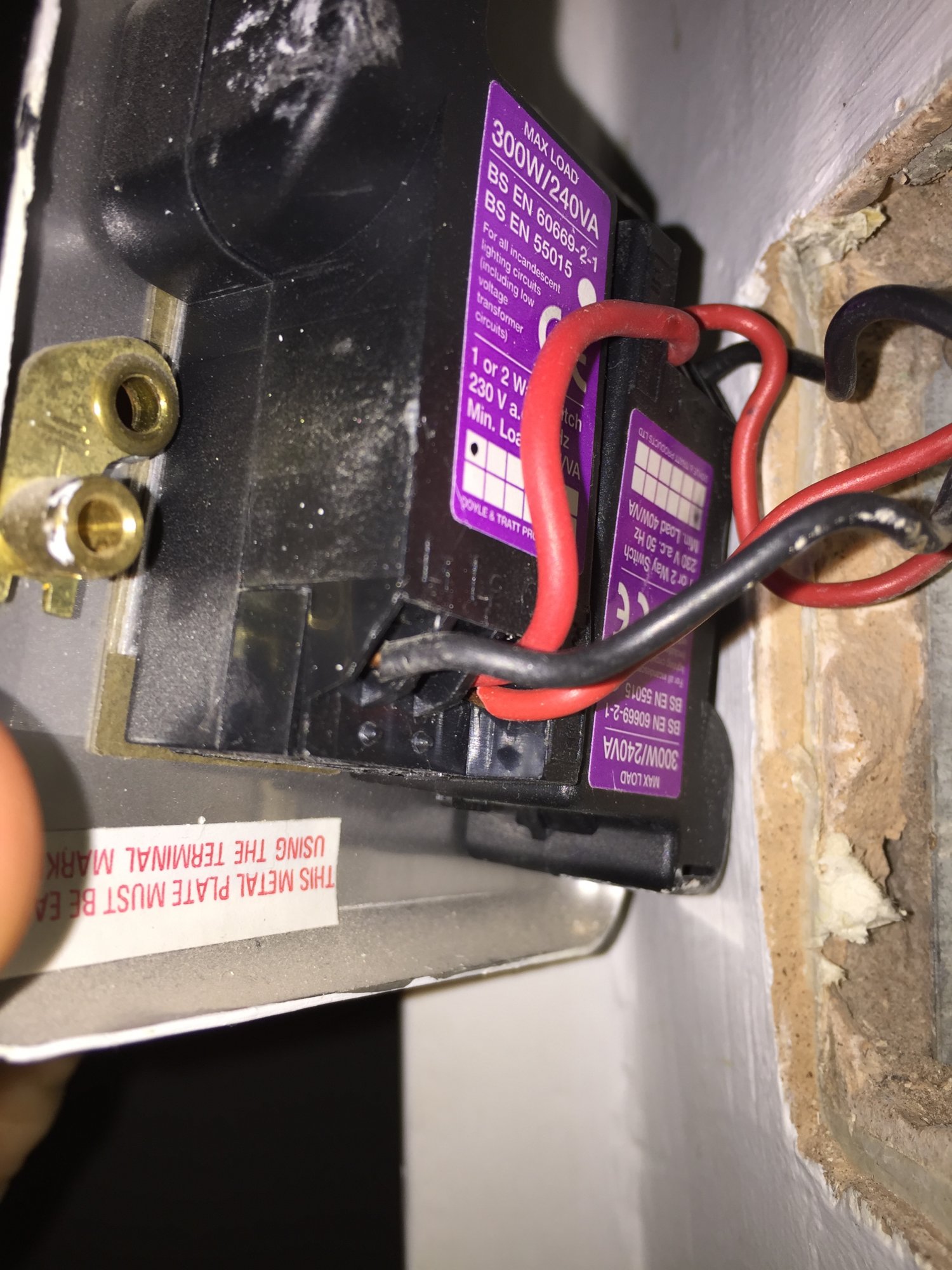Hi
I have a dimmer light switch that would not turn on first time anymore, but if I gave the switch housing a thump it would come on. Assuming a loose connection in the switch, I turned off the circuit at the fuse box, and unscrewed the switch. A small screw dropped out of the switch on to the floor - it had come from the Earth on the inside of the switch.
This is a metal faceplate 2 gang switch, housed in a metal back box. There's two black leads, which each attach to an L1 on each switch. There's two red leads, which attach to each C, with a small red lead also linking the two Cs together. There's two bare copper wires cut back about as far as they go but they don't seem to be attached to the back box in any way. The earth screw on the inside of the faceplate (where the screw fell out when I took the faceplate off) has a small piece of copper sitting in the hole.
Not realising I had to earth this metal faceplate, I tightened all the L1 and C (the black wires and red wires), screwed the faceplate back into the wall and turned the power on, and the switch now works first time ever time. Then I got paranoid that it's not earthed, and it's metal faceplate and I'm going to die. So I turned the circuit off again at the fuse box and now I'm here. I've tried to contact my usual electrician but he's not answering. I have no RCD at the fuse box. Is my light switch safe or not?
Many thanks!
I have a dimmer light switch that would not turn on first time anymore, but if I gave the switch housing a thump it would come on. Assuming a loose connection in the switch, I turned off the circuit at the fuse box, and unscrewed the switch. A small screw dropped out of the switch on to the floor - it had come from the Earth on the inside of the switch.
This is a metal faceplate 2 gang switch, housed in a metal back box. There's two black leads, which each attach to an L1 on each switch. There's two red leads, which attach to each C, with a small red lead also linking the two Cs together. There's two bare copper wires cut back about as far as they go but they don't seem to be attached to the back box in any way. The earth screw on the inside of the faceplate (where the screw fell out when I took the faceplate off) has a small piece of copper sitting in the hole.
Not realising I had to earth this metal faceplate, I tightened all the L1 and C (the black wires and red wires), screwed the faceplate back into the wall and turned the power on, and the switch now works first time ever time. Then I got paranoid that it's not earthed, and it's metal faceplate and I'm going to die. So I turned the circuit off again at the fuse box and now I'm here. I've tried to contact my usual electrician but he's not answering. I have no RCD at the fuse box. Is my light switch safe or not?
Many thanks!



